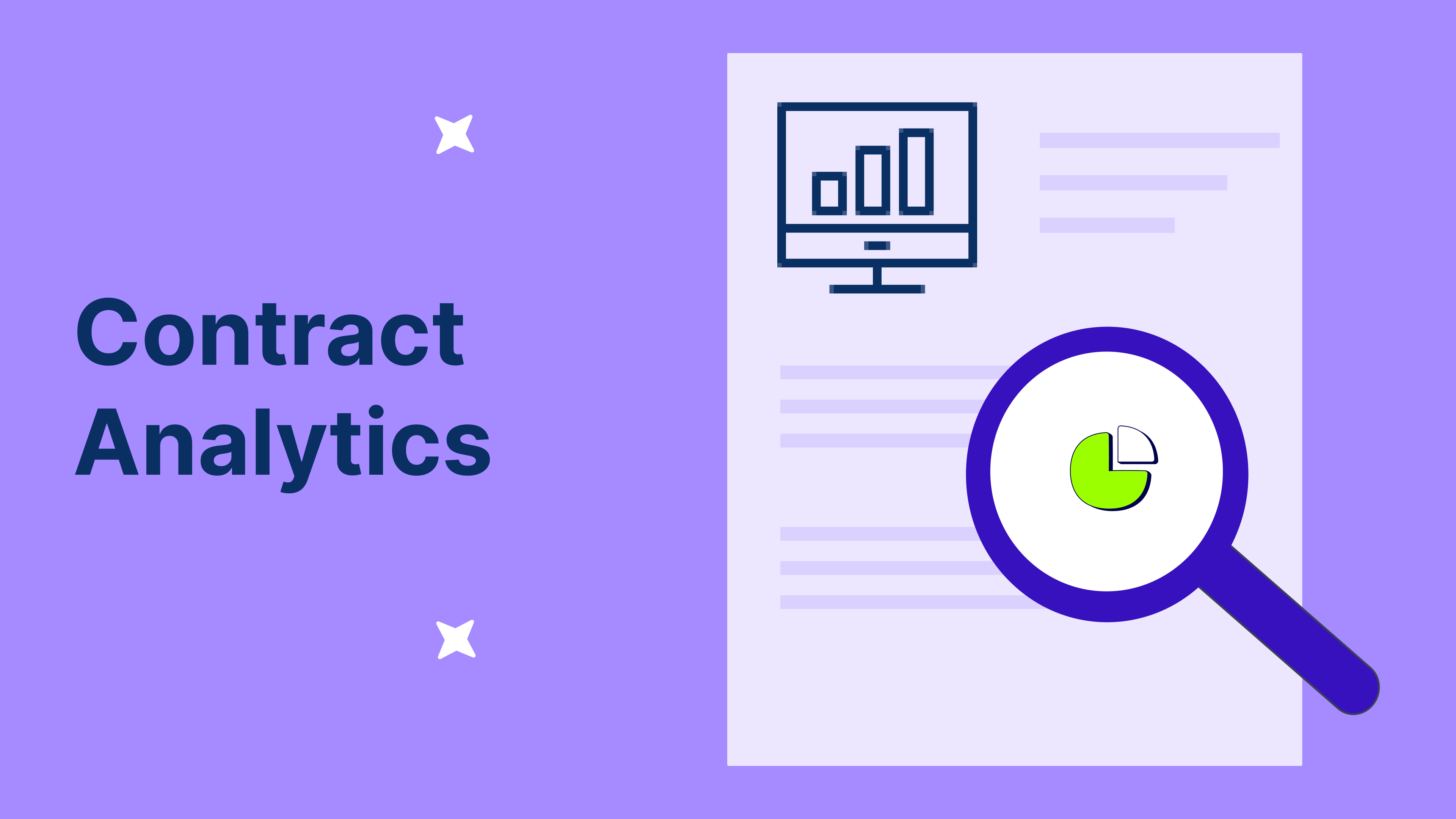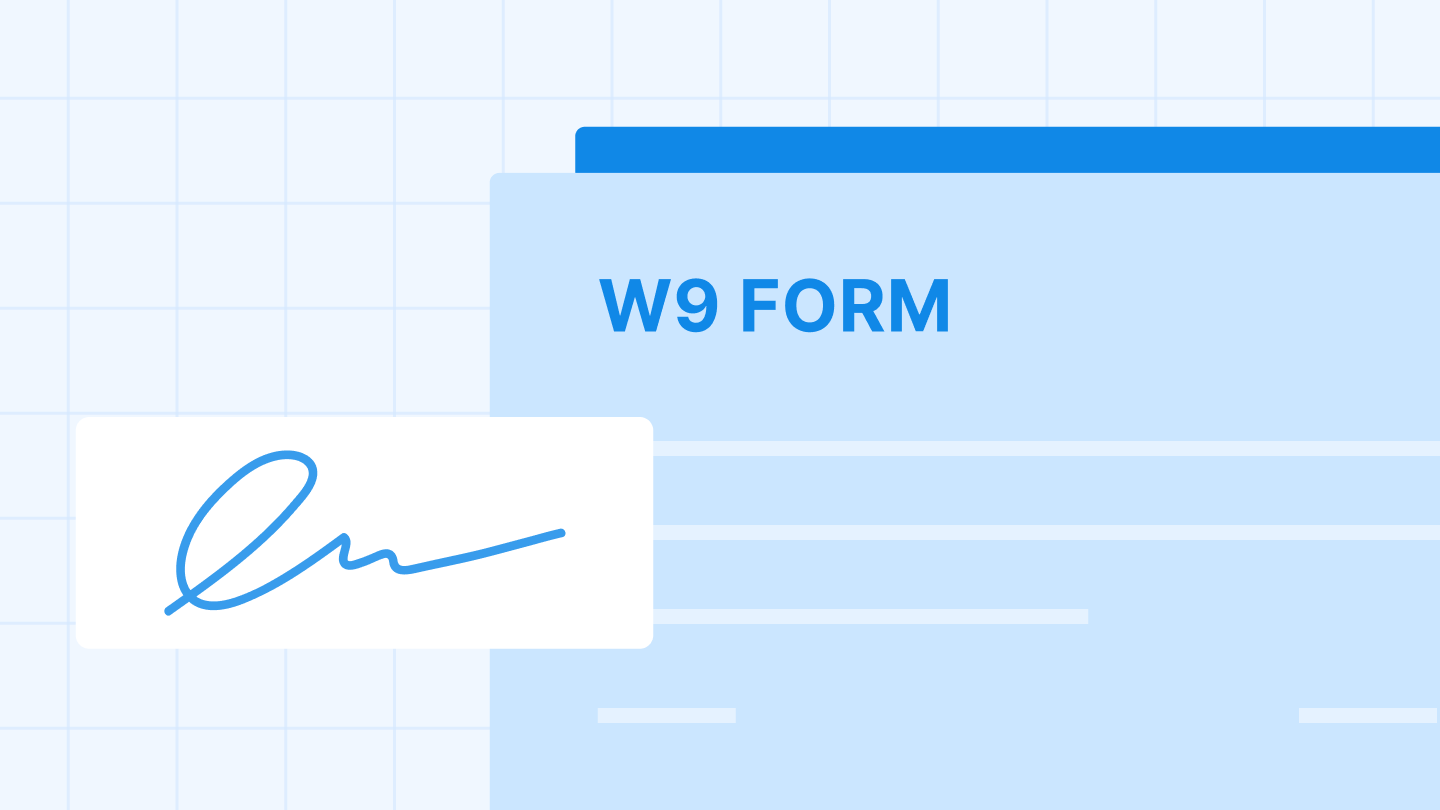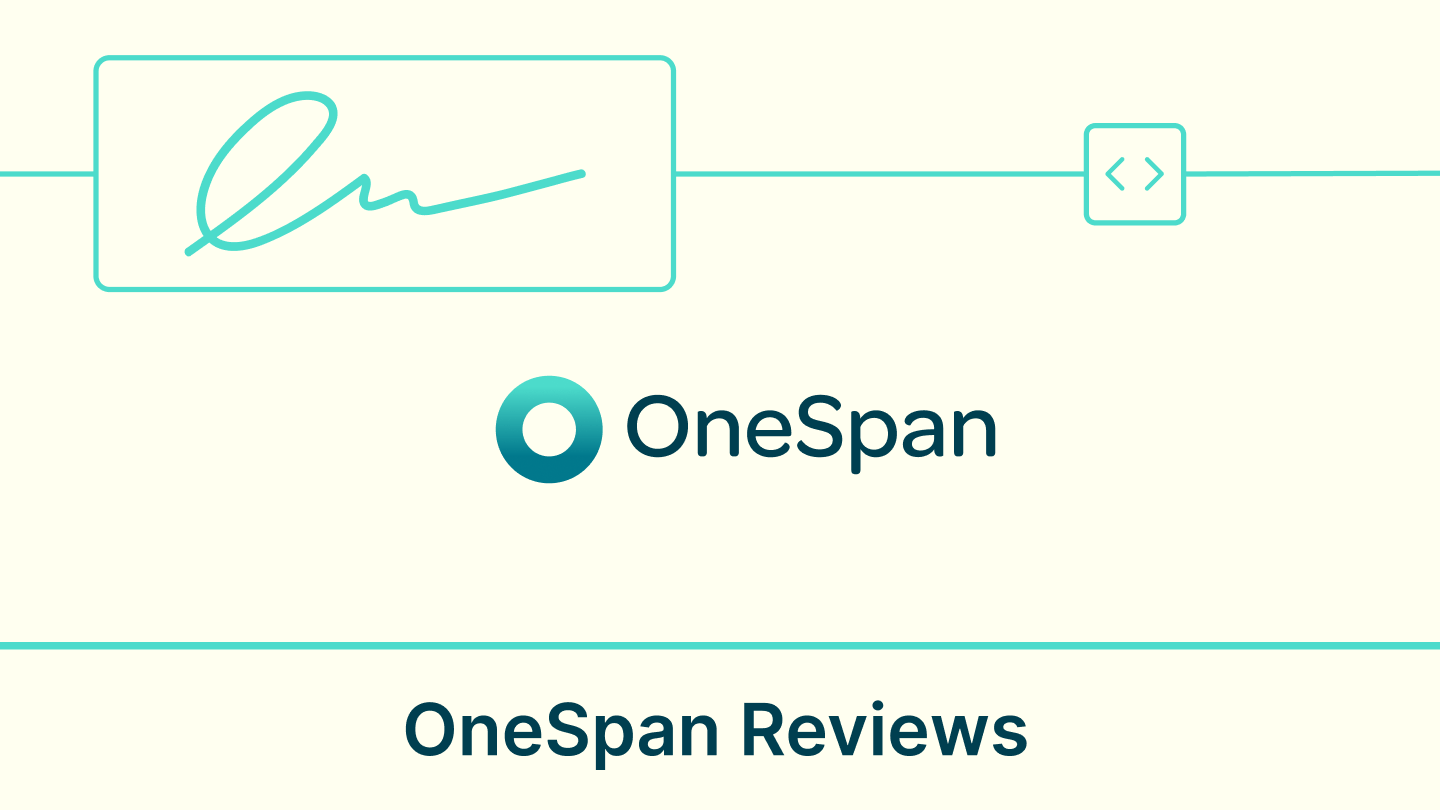In an EY Law Survey, over 50% of organizations said inefficiencies in their contracting processes cost them business. Think about it.
Contract analytics changes that.
Contract analytics uses data analytics, machine learning, and AI to pull out key data points from contracts, like clauses, deadlines, and risk flags, so legal and business teams can review smarter, move faster, and avoid costly oversights.
Introduction to contract analytics
Contract analytics is a natural evolution of contract management. It brings automation and insight to a traditionally manual process.
At its core, contract analysis software uses data analysis tools and techniques to extract, review, and interpret data from contracts. It turns static, text-heavy documents into structured, searchable information, making it easier to spot risks, track obligations, and uncover opportunities.
This technology is becoming increasingly important across functions like legal operations, procurement, sales, and compliance — teams that deal with high volumes of contracts and need to move quickly without sacrificing accuracy or control.
Importance in modern business
As contract volumes grow, contract management analysis becomes essential to ensure obligations are tracked and business value is realized. Here’s why contract analytics is becoming increasingly important:
Contract volumes are increasing
Across departments like sales, procurement, HR, legal, and finance, the volume of contracts is rapidly rising. Each new client, supplier, employee, or partnership brings another contract into the system.
Managing these documents manually, through shared drives, spreadsheets, or email chains, is time-consuming and error-prone. Important terms get buried, deadlines are missed, and teams waste hours looking for information that should be instantly accessible. As contract portfolios scale, traditional methods simply can’t keep up.
Missed clauses, obligations, and renewals increase risk
When contracts aren’t centrally tracked and analyzed, organizations are more likely to miss critical terms, such as auto-renewal clauses, service-level agreements, or regulatory obligations. These oversights can lead to financial penalties, legal disputes, compliance violations, or even lost business.
In industries like healthcare, finance, or government contracting, missing a single clause could mean violating laws like HIPAA or GDPR, which can result in substantial fines and reputational damage.
Contracts hold valuable strategic insights
Beyond risk, contracts contain a goldmine of business intelligence. They hold details about pricing structures, vendor performance, payment terms, delivery timelines, and renewal patterns.
When analyzed at scale, this data can help companies identify which vendors are consistently underperforming, which deals are most profitable, or where negotiation terms can be improved. Without analytics, all of this remains untapped.
Contract analytics enables data-driven decisions and risk mitigation
Contract analytics turns unstructured contract text into actionable data. By using AI and machine learning, organizations can automatically extract key information, flag potential issues, and surface trends across thousands of agreements. This enables leaders to make faster, smarter decisions, whether it’s renegotiating a supplier agreement, identifying non-compliance, or optimizing contract cycles. It also supports proactive risk management by alerting teams before obligations are missed or renewal windows close.
Key components and technologies
Modern contract analysis tools are becoming central to contract management analysis, helping teams uncover trends, risks, and hidden value across portfolios.
Contract analytics relies on a blend of advanced technologies to extract, structure, and interpret information from complex legal documents. These tools work together to automate what was once a slow, manual process, enabling faster, more accurate decision-making across departments.
The following are the core components that power modern contract analytics solutions:
1. Optical character recognition (OCR)
Many contracts still arrive as scanned PDFs or image files, especially in industries like real estate, insurance, or government. OCR technology converts these image-based or scanned documents into searchable, machine-readable text, making it possible to analyze contracts that would otherwise be locked in static formats.
Without OCR, any document that isn’t digitally native would have to be processed manually, which would slow down workflows and increase the risk of errors.
2. Natural language processing (NLP)
NLP is what allows contract analytics tools to “understand” legal language. It enables the system to identify and extract important elements from a contract, such as clauses, key dates, parties involved, obligations, and potential risks.
Since legal language can vary significantly from one contract to another, NLP is essential for recognizing patterns, interpreting meaning, and organizing information in a structured way that teams can review quickly.
3. Machine learning models
Machine learning takes contract analytics a step further by continuously improving accuracy over time. These models learn from historical contract data and user behavior, such as how certain clauses are tagged or reviewed, to better predict and extract similar information in new contracts.
Over time, this results in smarter, faster, and more accurate analysis, especially when dealing with large volumes or complex language variations.
4. Clause libraries and metadata tagging
To make contracts easier to compare, manage, and benchmark, many tools use clause libraries and metadata tagging. A clause library stores pre-approved or commonly used contract clauses, which helps with standardization across agreements.
Metadata tagging assigns labels to specific parts of the contract, like payment terms, governing law, or renewal dates, so they can be easily filtered, analyzed, and reported on. This structure supports consistency, speeds up negotiations, and reduces risk.
5. Integration capabilities
Contract analytics becomes even more powerful when it integrates with the rest of your business ecosystem. Many platforms offer seamless integrations with contract management, CRM (customer relationship management), and ERP (enterprise resource planning) systems.
This enables a continuous flow of contract data between departments, reducing manual handoffs and ensuring that everyone, from sales to legal, is working from the same source of truth.
Benefits of implementing contract analytics
Adopting contract analytics can have a huge impact on how an organization handles contracts, turning what used to be a reactive, time-consuming process into a strategic advantage. By automating the review and interpretation of contract data, businesses can achieve greater speed, visibility, and control across the contract lifecycle.
Here’s how analytics adds value to contract management:
1. Speed and efficiency
Manual contract review is one of the most time-consuming tasks for any team that deals with high volumes or complex agreements.
Contract analytics automates the extraction of key data points, enabling faster review and analysis across thousands of documents.
Instead of combing through contracts line by line, teams can search, filter, and prioritize relevant information in seconds. This improves turnaround times for approvals, onboarding, renewals, and compliance checks.
2. Risk reduction
One of the biggest challenges in contract management is identifying and managing risk, especially before an agreement is signed.
Contract analytics tools are designed to flag non-standard, non-compliant, or high-risk clauses automatically, helping teams spot issues early in the process.
Whether it’s an unfavorable indemnity clause or a missing termination right, analytics ensures that nothing slips through the cracks.
3. Improved compliance tracking
Regulations like GDPR, HIPAA, and industry-specific compliance rules often require organizations to monitor and enforce specific terms across all contracts.
Contract analytics simplifies this by automating the tracking of regulatory obligations and internal policy requirements.
It can surface clauses related to data protection, jurisdiction, and reporting timelines, making it easier to maintain audit readiness and avoid regulatory breaches.
Many contract analytics tools integrate with contract management dashboards to visualize key metrics like renewal dates, obligation status, and risk exposure in real time.
4. Cost savings
Contract analytics leads to both direct and indirect cost savings. It helps reduce legal spend by minimizing the time attorneys and legal operations teams spend on repetitive reviews.
It also prevents costly mistakes, such as missing auto-renewal deadlines, paying penalties for non-compliance, or agreeing to unfavorable terms.
Over time, these efficiencies translate into substantial financial benefits, especially for businesses managing hundreds or thousands of contracts.
Signeasy AI automatically extracts key expiration dates from your contracts, allowing you to set reminders and sync them with your calendar.
5. Negotiation advantage
With access to historical contract data and standardized clause libraries, businesses gain a strong edge during negotiations.
Contract analytics allows teams to benchmark proposed clauses against past agreements, quickly identifying what's standard and what's not. This not only accelerates negotiations but also gives teams the confidence to push back on risky or one-sided terms, ultimately resulting in better deals.
Common use cases of contract analytics
Contract analytics is a strategic asset that supports smarter, faster decision-making across a range of business functions. From due diligence to compliance, here are some of the most common ways organizations use contract analytics to their advantage.
1. Sales acceleration
Sales teams often encounter delays waiting on contract review and risk approvals.
With contract analytics, legal and deal desk teams can pre-analyze contracts for common risks and non-standard terms, allowing for faster routing, redlining, and approval. This shortens the sales cycle and reduces friction in the closing process.
2. Regulatory compliance
Whether it's data privacy, employment law, or industry-specific regulations, compliance requirements are often buried deep in contract language.
Contract analytics tools can automatically identify clauses related to GDPR, HIPAA, anti-bribery, or local jurisdictional rules, making it easier for teams to ensure regulatory alignment and stay audit-ready.
3. Contract renewal and renegotiation
Missed renewal windows or automatic rollovers can lead to unfavorable terms or unexpected costs.
Contract analytics solves this by flagging renewal dates, notice periods, and renegotiation opportunities well in advance. It enables proactive planning and gives businesses a chance to reassess vendor performance, update pricing, or renegotiate terms on their own schedule.
4. Compliance monitoring
Staying compliant with internal policies and external regulations is a constant challenge, especially when managing a growing portfolio of contracts.
Contract analytics helps organizations automatically track obligations, flag risky clauses, and surface non-compliant terms. It ensures that contracts align with company standards and evolving legal requirements, reducing the risk of violations or oversight.
5. Due diligence for mergers and acquisitions
During mergers and acquisitions, time is limited and stakes are high.
Contract analytics allows teams to quickly review large volumes of contracts to identify potential liabilities, renewal terms, obligations, and non-standard clauses. This speeds up the due diligence process and helps buyers make more informed, confident decisions.
Challenges and considerations
While contract analytics offers significant value, implementing it effectively isn’t without its challenges. Organizations should be aware of key considerations that can impact adoption, performance, and long-term success.
Let’s look at some of the most common hurdles and what they mean for teams thinking about investing in this technology
1. Data quality issues
For contract analytics tools to work effectively, they need access to clean, readable documents. Unfortunately, many organizations still deal with poorly scanned contracts, inconsistent formatting, or documents that mix multiple languages or structures.
These issues can hinder automation, reduce accuracy, and require extra manual correction. Investing in document standardization and OCR-ready scans is often a necessary first step.
2. Change management
Legal teams are often cautious about automation, especially when it comes to reviewing sensitive or high-risk content. Getting legal and contract owners to trust AI-powered insights and shift from manual review to digital tools requires thoughtful change management, training, and ongoing support.
3. Security and privacy
Contracts contain highly sensitive information like client data, pricing terms, IP clauses, compliance obligations, and more.
Organizations need to ensure that contract analytics platforms follow strict security protocols, such as encryption, access control, and audit logs, and comply with relevant regulations like GDPR or industry-specific standards. Vetting vendors for privacy policies, certifications, and data-handling practices is also important.
4. Customization needs
Contract language varies between organizations as well as across industries and regions. For example, a healthcare contract may include different clause structures and compliance rules compared to a tech vendor agreement.
That means contract analytics tools may need customization or industry-specific clause models to perform accurately. Out-of-the-box solutions often need tuning to reflect company-specific terminology and priorities.
Conclusion
Yes, like any other technology, contract analytics has its share of challenges — whether it’s cleaning up legacy contracts, training teams to embrace new tools, or integrating with existing systems. But the long-term return on investment is clear.
Organizations that adopt contract analytics see faster turnaround times, stronger compliance, fewer missed obligations, and deeper insight into the contracts that drive their business.
It is one of the most practical ways to streamline your workflows, unlock the full value hidden in your contracts, and future-proof your operations.











